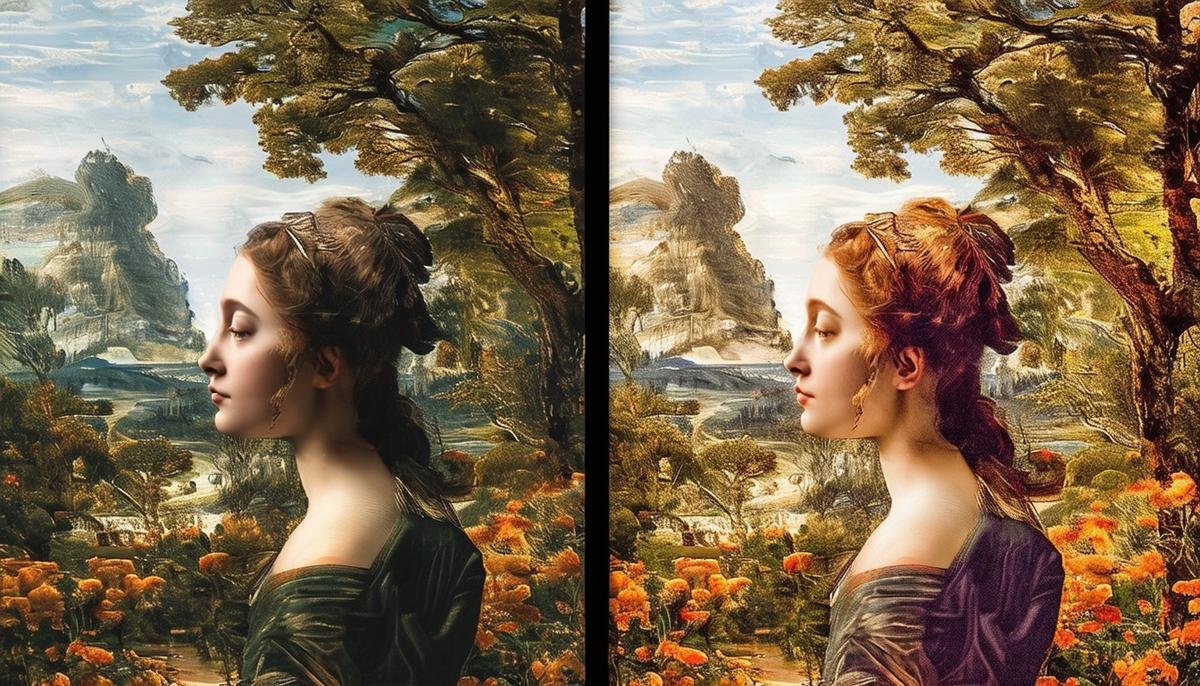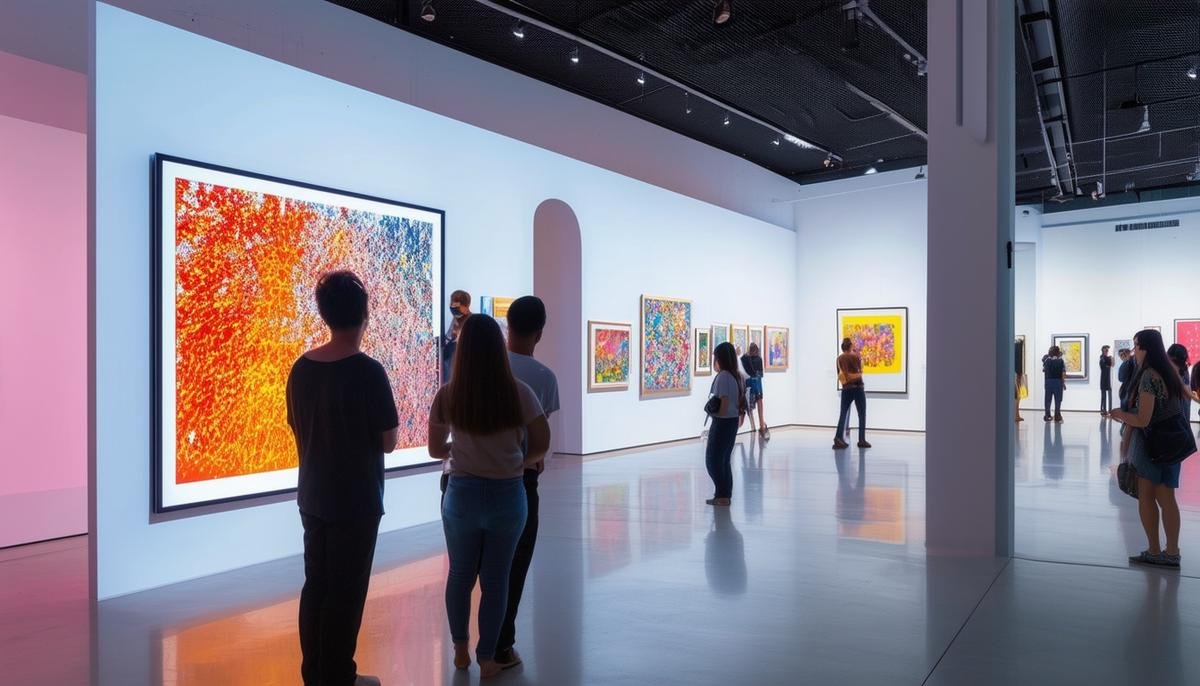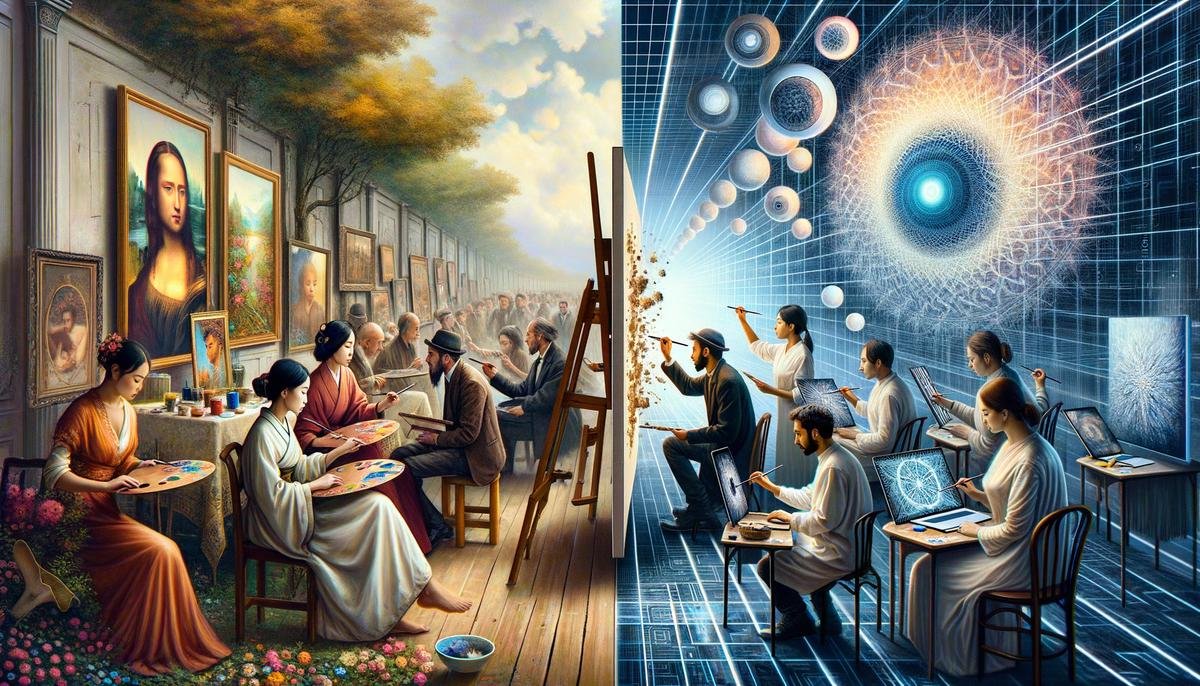AI-Generated Art
AI tools are now creating art using sophisticated algorithms. Artists input parameters like colors or styles, and the computer produces something new. Neural Style Transfer can apply one artist's style to another image, while Generative Adversarial Networks (GANs) compete to produce gallery-worthy images.
The art-making process is evolving into a collaboration between human creativity and machine logic. This raises questions about who the real artist is – the algorithm writer, the machine, or the person guiding the process.
AI is also becoming a critic and curator, analyzing vast collections to identify styles, trends, and overlooked works. Artists are incorporating coding and AI workshops into their skillsets, blending data science with traditional techniques.
This new chapter in art history combines code and creativity, relying on both technology and human intention. AI continues to expand the possibilities of art creation and curation.

AI in Art Curation
AI is transforming art curation by analyzing data to design exhibitions and personalize viewer experiences. It can suggest optimal artwork arrangements and create dynamic layouts based on visitor interactions.
AI curators craft personalized pathways through galleries, learning individual preferences to surprise and delight each viewer. This raises questions about AI's influence on subjective experiences and the balance between efficiency and traditional curation.
By uncovering hidden connections and showcasing underappreciated artists, AI-driven curation is shaping future artistic dialogues. It serves as a collaborator in telling the evolving story of human creativity, turning exhibition spaces into interactive canvases that invite deeper audience engagement.

Impact on Art Criticism
AI is changing art criticism by providing detailed analysis of artistic elements and uncovering connections between artists and styles. This offers a new level of objectivity, sometimes revealing insights human critics may have missed.
The rise of AI-generated art raises questions about authenticity and originality. Critics debate the ownership of creativity when AI produces works mimicking famous artists' styles.
AI also assists in detecting art forgeries with high precision, aiding museums and collectors in verifying artworks. This technological approach to criticism doesn't aim to replace human critics but rather to complement them, encouraging a reevaluation of creativity and artistic value.

Ethical Considerations
AI in art raises ethical questions about intellectual property rights and authorship. When AI creates art, it's unclear who owns the rights – the programmer, the AI, or the user who initiated the creation.
There are concerns about AI's impact on traditional artists' livelihoods. As AI lowers barriers to entry in art creation, human artists may face competition from machine-generated works.
- Lower prices for human-created art
- Reduced job opportunities for traditional artists
- Increased competition from AI-generated art
Bias in AI algorithms is another issue. If training data isn't diverse, AI-generated art may perpetuate stereotypes or exclude certain perspectives. Ensuring fair representation in datasets is crucial for creating inclusive AI art.
Balancing innovation with ethical responsibility is key as we explore AI's role in art. The goal is to find harmony between technological potential and human insight, addressing these ethical challenges to create meaningful art at the intersection of technology and creativity.

AI's Role in Art Education
Art schools are incorporating AI into their curricula, teaching students to use machine learning and generative art techniques alongside traditional methods. This prepares a new generation of artists who can work with both physical and digital tools.
Students learn to collaborate with AI, using it to push creative boundaries rather than simply automate existing processes. They explore new forms of artistic expression that combine human intuition with algorithmic capabilities.
Ethical discussions are an important part of this education, as students consider the implications of AI in art creation and criticism. This prepares them to be both innovative creators and thoughtful contributors to the evolving art world.
By integrating AI, art education fosters an environment where traditional techniques and digital skills enhance each other, providing artists with expanded means of expressing their ideas.

In the intricate dance between human creativity and machine logic, AI is reshaping how we perceive and engage with art. This collaboration invites us to reconsider traditional boundaries, blending technology with artistic expression in a way that enriches our understanding of both.
- Cohen H. AARON, an Automatic Artist. Proceedings of the International Conference on Computational Intelligence and Multimedia Applications. 1995:320-325.
- Elgammal A, Liu B, Elhoseiny M, Mazzone M. CAN: Creative Adversarial Networks, Generating "Art" by Learning About Styles and Deviating from Style Norms. arXiv. 2017:1706.07068.
- Gatys LA, Ecker AS, Bethge M. Image Style Transfer Using Convolutional Neural Networks. Proceedings of the IEEE Conference on Computer Vision and Pattern Recognition. 2016:2414-2423.



